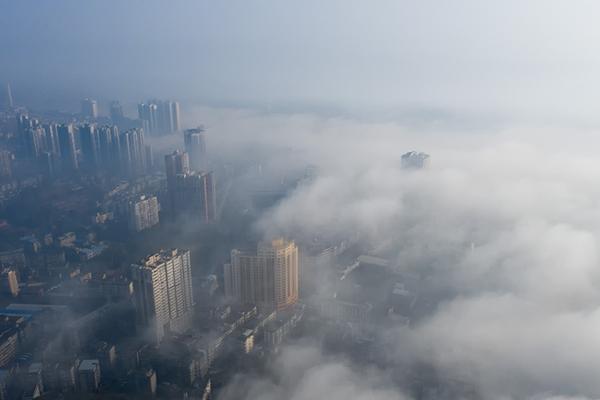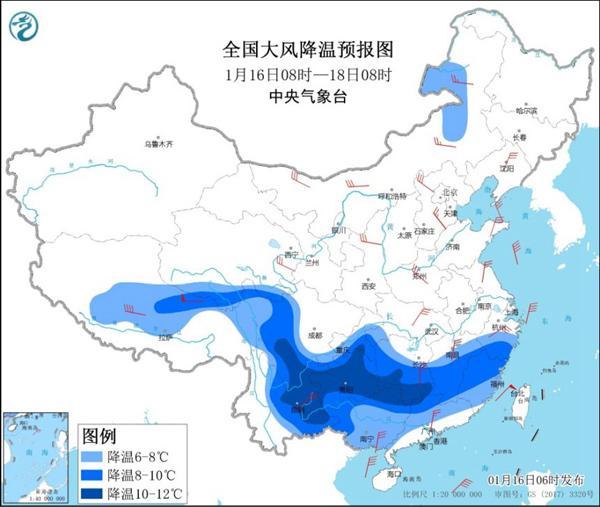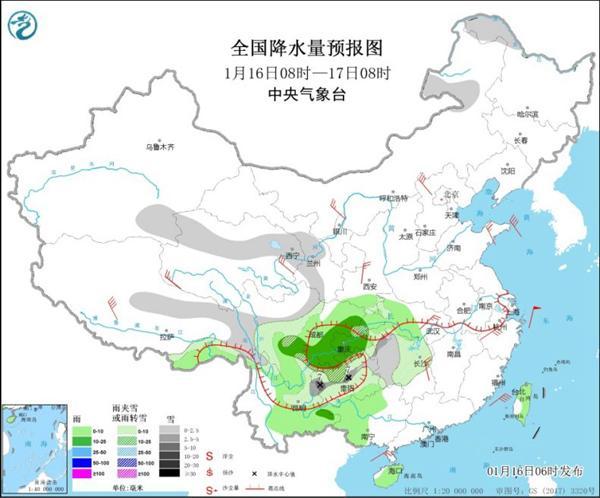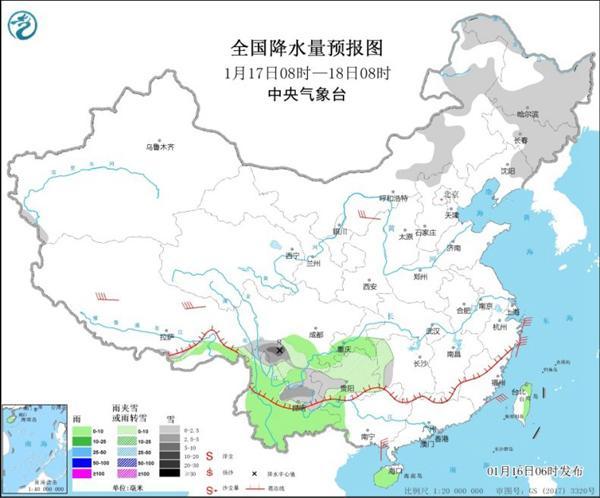[The temperature in the south will start the rapid drop mode] It is predicted that the cold wave will move southward in two days this weekend (January 16-17), focusing on the southern region. The temperature in the south will start the "rapid drop" mode, and the maximum temperature in the Yangtze Huaihe River, Jiangnan, and the eastern part of Southwest China will drop by more than 10 ℃, showing a significant difference between cold and warm. In addition, due to the relatively good coordination of water vapor conditions during the cold wave, the rain and snow in the south increased significantly, and there was heavy snow locally.

Recently, it was cloudy and rainy in Leshan, Sichuan, and the urban area along the river was as ethereal as a fairyland. (Picture/Zhang Shiyan)
More rain and snow in the south during the core cooling period of this cold wave
Yesterday, the cold wave mainly affected the north, bringing strong winds and cooling weather to many places. Most of the Northeast, most of North China, the middle east of the Yellow River and Huaihe River, the east of the Yangtze River and Huaihe River, and other places experienced a cooling of 6~10 ℃, while parts of central and southern Jilin, northern Liaoning, and the east dropped 12~20 ℃. Before the arrival of the cold wave, there was a wave of warming in the south yesterday. The temperature in the south of the Yangtze River rose to a recent high, reaching about 20 ℃ in many places.
However, as the cold wave moves southward, the temperature in the south will reverse significantly. The Central Meteorological Observatory predicted that from January 16 to 17, the daily average or minimum temperature in the central and eastern parts of the Qinghai Tibet Plateau, most of the southwest, central and southern Jiangnan, and southern China will drop by 6 to 10 ℃, of which the temperature in eastern Yunnan, most of Guizhou, and southwestern Jiangnan will drop by more than 10 ℃.

In general, the cold wave is moving fast. A place can cool down in one or two days. For example, the highest temperature in Hangzhou was above 20 ℃ yesterday, and today it will only be 7 ℃; The highest temperature in Changsha yesterday was also around 18 ℃, and today it will be only 9 ℃, with obvious difference between cold and warm.
Compared with the cold wave from January 6 to 8, the water vapor conditions during this wave of cold wave are relatively good, which will stimulate a large range of rain and snow weather in the south. It is expected that from 16th to 17th, there will be light to moderate rain (snow) or sleet in the east and south of southwest China, Jianghan, west and north of Jiangnan, west of South China, and heavy snow in local areas.


Meteorological experts remind that the temperature in the south is changing rapidly this weekend, so the public must pay attention to adding clothes in time and take good measures to prevent cold and keep warm. In addition, pay attention to traffic safety when traveling, and avoid slippery roads.
On weekends, the north still feels frozen, and most areas remain dry
For the north, the impact of the cold wave tends to weaken this weekend, but the aftereffect of "refrigeration" still exists, and most parts of the north will still spend in the cold. Like Beijing, the highest temperature today is only 0 ℃, and the body feels cold.
The impact of this cold wave process is relatively fast. After cooling down in most parts of the north, the "rebound" mode will be started, and the temperature will rapidly rise to a higher level than that in the same period of the year. However, from the 17th to the 18th, weak cold air still affected the Northeast. The temperature in the Northeast continued to be low, and it would pick up significantly from the 20th.
In terms of precipitation, the snowfall in the northeast gradually weakens or stops today. Except for small to moderate snow or sleet in some areas of northeast Inner Mongolia, northwest Heilongjiang, northern Qinghai, southern Gansu and other places, most of the north has little precipitation and is still very dry. The public should pay attention to replenishing water to prevent fire.




